In recent decades, the use of dogs in conservation work has exploded. Deployed to detect things like invasive or elusive species, scat, poachers, illegal wildlife trade products, and much more, conservation dog teams are trained to aid teams in the field. With benefits like speedier searches over large areas, proven targeted detection accuracy, and ease of transport and surveying, conservation dogs also offer possibilities for enhancing other technological methods by confirming or providing results in real-time.
Conservation dog teams now provide scat, reptile, aquatic species, whale scat, and invasive plant detection, and plenty more. This expansion of use is partly due to refined training techniques that offer a broader capability in very specialized detection roles, and partly due to more people seeing the capabilities and benefits of trained dogs.
Specifically, the utilization of dogs in conservation has experienced a considerable increase in recent years as people realize what the capability brings to the field survey arena. The benefits of dogs offering enhanced detection to support surveys includes:
- Speed of search
- Covering large areas effectively
- Proven detection capability
- Calibrated on a variety of species, if required
- Accuracy in the detection of targets and ignoring similar non-target specimens
- And easy to transport to survey sites.
Whether you train, handle, use, or are interested in finding out more about conservation dogs, this is the community for you! This group is growing, so if you'd like to get started and make connections here, here are some suggestions:
- Do you have advice to share with others who are interested in trying conservation dog work for the first time? Or do you need advice on whether conservation dogs suit your work?
- Do you have resources or research to share on training or using conservation dogs?
- Do you have a case study or project update that involves conservation dogs?
- Do you have a question about how to access conservation dogs for your own work?
Your group manager is Paul Bunker. Direct message him through WILDLABS or email him here with any questions or suggestions.
Header photo: Bill, photographed by Stephanie O'Donnell
No showcases have been added to this group yet.
🔧Full Stack JS Developer | Former Zookeeper 🐯
- 0 Resources
- 0 Discussions
- 3 Groups
- @MandyEyrich
- | She/Her
University of Florida (UF)
Bridging industries with 15+ years of cross-sector expertise specializing in user-centric technology and product strategy, UX research, UX/UI design, process optimization, and end-to-end agile product development moving from ideation to iteration.
- 0 Resources
- 0 Discussions
- 26 Groups
Sustainability Manager for CERES Tag LTD. An animal health company; animal monitoring, conservation, & anti-poaching/ rural crime. Wildlife, livestock, equine & companion. #CeresTrace #CeresWild #CeresRanch





- 2 Resources
- 20 Discussions
- 23 Groups
WildTrack
Research, development and implementation of non-invasive montoring for endangered species



- 1 Resources
- 25 Discussions
- 11 Groups
- 1 Resources
- 3 Discussions
- 5 Groups
- @divey06
- | She/Her
- 0 Resources
- 0 Discussions
- 4 Groups
- @trish_lai
- | she/her
UCD SVM Student
- 0 Resources
- 0 Discussions
- 11 Groups
- @alekseisaunders
- | He/Him/His
Wildlife conservationist, ichthyologist, now pursuing a career in Software Engineering and Web Development

- 0 Resources
- 2 Discussions
- 4 Groups
- @StephODonnell
- | She / Her
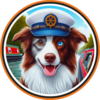


- 196 Resources
- 676 Discussions
- 31 Groups
- @ivalina
- | She/her
I am a fishery biologist working in Central America. As Science Coordinator of the NGO MarAlliance, I help coordinate and implement research and data analyses across our multiple country programs and lead the deepwater fisheries research in the MesoAmerican Region.
- 0 Resources
- 1 Discussions
- 2 Groups
I am a recently graduated Computer Scientist and Mathematician passionate about animals and nature.
- 0 Resources
- 0 Discussions
- 10 Groups
Wildlife Bio in Yukon Territory Canada
- 0 Resources
- 1 Discussions
- 6 Groups
Scientists at Victoria's Healesville Sanctuary are using trained sniffer dogs on paddleboards to track and identify platypuses in their habitat.
23 July 2025
Murray-Darling carpet python populations in South Australia have declined due to loss of habitat and predation. Trials using conservation detection dogs to find the snakes in the Riverland have so far had positive...
26 May 2025
A published research study
15 January 2025
Their keen noses are helping researchers document the diversity of fungi living underneath Pacific Northwest forests.
15 January 2025
Published research paper
27 August 2024
WildLabs will soon launch a 'Funding and Finance' group. What would be your wish list for such a group? Would you be interested in co-managing or otherwise helping out?
5 June 2024
YouTube link to interview regarding the Saola Detection Canine project in Laos
10 December 2023
This article discusses a project utilizing canines to detect the scat of a critically endangered mammal, the Saola.
10 December 2023
A secure platform designed for those working to monitor & protect natural resources. Insight facilitates sharing experience, knowledge & tools to increase efficiency & effectiveness in conservation. By...
7 November 2023
Detection dogs may provide a non-invasive way to determine female receptivity, but this has not been explored in captive wildlife. This exploratory study investigated the use of detection dogs as a novel method of...
25 October 2023
By sniffing out egg masses, dogs are helping researchers against an invasive species
26 April 2023
Published paper attached
14 November 2022
September 2024
event
| Description | Activity | Replies | Groups | Updated |
|---|---|---|---|---|
| Hey all!!I've been participating in a small mammal trapping study and we are having bad luck trapping. We do have a dog with us (not a... |
|
Conservation Dogs | 1 week 2 days ago | |
| Thank you! I will follow up by email. |
+8
|
Animal Movement, Conservation Dogs, East Africa Community, Geospatial, Sensors, Women in Conservation Tech Programme (WiCT) | 5 months ago | |
| Yes, Belgian Malinois dogs are very common nowadays to accompany park rangers in South Africa. 🐕🦺The park I worked with had three of them, but training them is quite expensive,... |
|
Conservation Dogs | 6 months ago | |
| The PCB mount terminals are actually quite robust and paired with a lock washer and something that would better secure the nylon (e.g., a piece of flat grooved plastic to add... |
|
Acoustics, Conservation Dogs, Sensors | 9 months ago | |
| Hi Steph, We appreciate the support! Thanks for the tag and your help managing the community!Patrick |
|
Sensors, Acoustics, Conservation Dogs, Emerging Tech, Open Source Solutions | 1 year 3 months ago | |
| These are great materials to refer to. I just have to wrap my amateur brain around the technological words but I should be fine. Thank you Harold. |
|
Conservation Dogs, Women in Conservation Tech Programme (WiCT) | 2 years 5 months ago | |
| "Preliminary results- Fecal samples are increasingly used in wildlife research to confirm species’ presence and to estimate population... |
|
Conservation Dogs | 3 years 1 month ago | |
| In this short presentation, Dr. Edgar Aviles-Rosa of the Canine Olfaction Lab at Texas Tech University joins Chiron K9's Principal,... |
|
Conservation Dogs | 3 years 4 months ago | |
| The UK's first Conservation Canine conference is now available for replay ticket purchase. Day 1 9:30 -... |
|
Conservation Dogs | 3 years 5 months ago | |
| thanks Pete, yes we're going to collect some from captive animals when they come out of hibernation. I'll keep in touch. |
|
Conservation Dogs | 3 years 8 months ago | |
| Thank you! I just replied via email. |
|
Conservation Dogs | 3 years 8 months ago | |
| With their boundless enthusiasm and amazing powers of smell, canines are playing a growing role in global efforts to protect wildlife. |
|
Conservation Dogs | 3 years 8 months ago |
Detection dogs in Conservation
29 November 2021 12:44am
6 December 2021 3:30pm
I would bet that yes, they are capable of it-- the question is mostly detection distance and whether it's vauable in the field. We've had similar situations with turtle nests and other difficult targets.
Do you have a few known hibernation sites that could be used to test dogs? If so, that would be a big help. Feel free to reach out to me or Alice Whitelaw (Alice@WD4C.org) if you'd like to discuss in more detail.
7 December 2021 9:29am
thanks Pete, yes we're going to collect some from captive animals when they come out of hibernation. I'll keep in touch.
Conservation Canine Conference
16 November 2021 1:10am
3 December 2021 7:02pm
I'm part of a GSD rescue, so we periodically get dogs that would do well in search. I'll email you.
-Robert
3 December 2021 8:03pm
You have Leo who was one of mine for adoption. The other dogs all went to new homes.
3 December 2021 9:18pm
Thank you! I just replied via email.
News Article: These Dogs Are a Bird's Best Friend
27 November 2021 1:30am
Training methodology for canine scent detection of a critically endangered lagomorph
23 September 2021 12:49am
Online/in-person courses in detection dogs
17 March 2021 3:28pm
27 May 2021 5:52am
Thanks any others online courses related to dogs utilization?
16 September 2021 1:17pm
This class is being offered again, here's the information:
Online
DATES: December 27, 2021 - January 21, 2022
EARLY BIRD REGISTRATION ENDS NOVEMBER 10, 2021
https://www.centerforwildlifestudies.org/courses/scentdogs-online-2-2021-2022
Longevity of Scented Gauze
30 August 2021 6:33pm
3 September 2021 7:23pm
There are a number of factors to consider here:
Firstly, gauze selection and preparation.
Sample collection.
Collection of distractor/control scents
Storage to include immediate storage (mylar bags, Borosilicate glass, Mason jars etc.) and then freezer or fridge.
The best gauze is Dukal unsterilized. Rinse the gauze in Ethanol and then dry in an oven 150f for 15mins. Store all unused gauze together until ready to use.
Ensure the person collecting uses disposable gloves (not powdered or chlorinated) and changes the gloves for each gauze. Rinse the turtle with clean unchlorinated water before scent collection to remove tank water and environmental odours.
As soon as sample is collected place in Mylar bag or Borosilicate jar or whatever you are using and seal. (Do not touch the outside of container with contaminated (scented) gloves). Use stainless steel tweezers if needed.
Make sure the person prepares controls (handles gauze without collection scent) and distractors (collect various scents) in exactly the same way and store them the same.
I do not typically freeze reptile samples as the scent can be delicate. I store in the fridge. Ensure all controls and distractors are stored the same or the dogs will learn to smell the storage and not the target (I have had that happen).
Once open I typical do not use for more than 30mins (if that) then dispose. The problem is the scent cannot replicate as there is not source for the odour and it will burn off quickly depending on the climatic conditions. I have stored samples for 3 weeks without issue but once open the deteriate fast.
Hope this helps.
7 September 2021 4:06pm
Thanks Paul!
That's really helpful! I'll order some of those gauze and follow your procedure.
7 September 2021 5:25pm
Please feel free to reach out if you have questions.
Dogs & technology
27 August 2021 8:23am
27 August 2021 3:25pm
Dogs, in simple terms are a tool just like any other technology you use. There are advantages and limitations just like any other technologies. I like to tell people they need to survey in depth. This means you use as many technologies as needed to minimize any limitations in your survey. The dogs can cover most requirements but if there is a limitation that is deemed to exist in your particular situation then you bridge that limitation with technology if available.
Some surveys only require a dog team to meet the goal and some need a layered approach.
This is where a professional dog team’s advice is important. They can assist in the planning phase. You can matrix your limitations and then mitigate with the dog and if there are still gaps see if technology fits the requirements.
It should never be seen as the dog team is the final solution unless they mitigate all your limitations. Which is often, but not always, the case.
Also remembering that the human element in the dog team is just as important as the dog.
So, a simple scenario is in areas of high target concentration needing individual and exact locations. The dog may be confused by the spread of scents all over the area but give you an approximation of a location. Then the humans need to take over with, for instance at night, heat sensing technology. In this case the dog team can reduce the potential target areas by telling you there is nothing present and then give you a priority area when they say something is present. This area reduction is a huge advantage to survey large areas and reduce resources required.
Or passive cameras can be used to monitor an area for target traffic then once establish they are passing the camera the dog team can be brought in to follow up the trail or reduce the area of the potential target’s location.
Remembering also that dogs can be a platform for technology such as GPS of tracklines and waypoints of target alerts.
Rescue dogs follow their noses to protect rare species
26 August 2021 3:26am
Great Crested Newt Detection Dog (video)
22 July 2021 3:27am
Training and usage of detection dogs to better understand bumble bee nesting habitat
19 June 2021 6:12pm
Crop Protection Dogs: Advice Requested
27 May 2021 5:53am
7 June 2021 10:29am
Hi Antoine,
I have worked extensively with livestock guarding dogs (Anatolians) in the past. The effectiveness of this conflict mitigation method depends largely on how well the dog and the livestock bond to each other. It makes use of the pack instinct of the dogs, bonding to the livestock as his pack to defend from attackers (including other predators).
So the first question would be what typical dog behaviour do you want to exploit for your "crop protection dogs"? I would assume that you want to use territorial behaviour as the basis of the dogs protecting the croplands as "their" territory. So your training should focus on this (not sure how you would do it, though). The second issue could be that the dogs might not recognize elephants as intruders into their territory; i.e. they might be come used to the presence of crop-raiding elephants over time -- I really do not know dog-elephant interactions well enough to make a prediction on how this might play out.
A third potential issue that you need to think about, is exactly how effective the barking dogs will be as deterrents. Even if they warn the local farmers, will the farmers be able to drive the elephants away without danger to themselves? And will the dogs be effective in deterring the elephants, or rather be an irritant that makes the elephants (more) aggressive? I don't know. Will the dogs actually attack the elephants, or be scared of them (and maybe run away towards the village while being chased by the elephants)?
I think if you can address all of these points effectively, there is a good chance that this approach will succeed.
Cheers,
Chavoux
14 June 2021 11:21am
Dear Chavoux,
thank you for your reply, you perfectly summarize the challenges of this project. I will add another one: dog care, community in Congo are not used to take care of their dog and guarding dogs will probably have to be feed.
As you said, all the point have to be addressed.
In order to partially answer, I will give a story from one of the village around Odzala:
An old man in the village was using his dogs to protect his crops, it seems that the dogs were going to the crops each night and deter the elephant from it. This solution seems to have work during several years and elephant would prefer to go to other crops (displacement of the problem). Unfortunately, one day, the dogs disappear one by one, I don't have all the information yet, but this could be the results of elephant attack, neighbour's jealousy, limited dogs care?
So it seems possible to actively use dog to protect the crop from elephant.
Regarding farmers, for some of them, they are already guarding their crops, but it has a heavy impact on their live. Dogs could improve this situation by alerting the farmer sleeping in his house nearby. He could sleep properly and be awake only when there is a real threat.
All the best,
Antoine.
Conservation Dogs’ Are Sniffing Out Species Humans Can’t See
13 June 2021 4:07am
Wildlife Trafficking Detection Tools
16 May 2021 10:51pm
Getting Started with Conservation Dogs: An Interview with Paul Bunker
 Ellie Warren
and 1 more
Ellie Warren
and 1 more
7 May 2021 12:00am
The Detection Dog Methodology - Rogue Detection Dogs - Video
4 May 2021 12:57am
How quoll-ified are northern and spotted-tailed quoll detection dogs?
3 April 2021 4:27am
14 April 2021 1:16pm
I just have to say that this is an absolutely brilliant title...bravo to those authors! :)
Scouring the Desert for a Seabird
12 April 2021 3:02am
Training methodology for canine scent detection of a critically endangered lagomorph: a conservation case study
6 April 2021 5:17pm
Video; Hunting for Hawkweed with detection dogs Research Thesis
26 March 2021 4:16pm
31 March 2021 5:41pm
This is great! I would love to learn more about how search area and transects affect detection. I look forward to reading her articles.
Detection dogs in nature conservation: A database on their world‐wide deployment with a review on breeds used and their performance compared to other methods
4 March 2021 8:56pm
18 March 2021 4:14pm
This is awesome!! Thanks for sharing. Reading about doggo's for "work" (and fun) is so lovely
A case study in canine detection of giant bullfrog scent
3 March 2021 3:43pm
"One of the ‘world’s worst’ invasive species"
2 March 2021 2:45pm
Benefits of incorporating a scat-detection dog into wildlife monitoring
1 March 2021 12:56am
Journal of Vertebrate Biology - Conservation Canine Papers
20 February 2021 9:53pm
New Group Manager - Introduction
16 January 2021 11:04pm
12 February 2021 7:17pm
Thank you for taking this on.
My particular interests are using local dogs trained by local people for scat detection (broadly defined), and how to evaluate and certify their performance. Local dog Toffee indicating on a training target;

12 February 2021 8:27pm
Thank you!
i know several organizations, including my own, that believe a valuable approach is local dogs and people supporting conservation in their own community is the best answer. Supported, where needed, by professional trainers/instructors to get them to a point they can be operational.
Great photo!
18 February 2021 12:12am
If and when you're ready to get a ton of attention (and maybe fundraise) for your conservation dog work send those pix to @dog_rates as I'm sure Matt would love to feature your pups.
Using a Wildlife Detector Dog for Locating Eastern Indigo Snakes
12 February 2021 2:26pm
Rogue Detection Dogs Webinar - Free
7 February 2021 5:25pm
Poison Detection Dogs for Wolf Conservation
3 February 2021 12:47pm
3 February 2021 5:51pm
I have seen posts on social media about poison detection dogs and I THINK I am connected to one of the teams. I will check.
Paul
Research paper: Training and olfactory generalization in conservation detection dogs for an endangered stonefly species
2 February 2021 4:20pm
Invitation to join the FIT community on WildLabs
13 May 2020 5:13pm








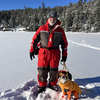








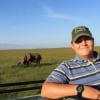


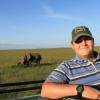













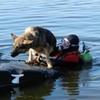

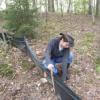
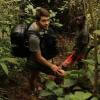




6 December 2021 9:24am
Thanks for sharing. We've funded research using a detection dog to succesfully find hibernating hedgehogs over winter. Wondering whether they're likely to be able to detect smaller hibernators - hazel dormice - on the forest floor?